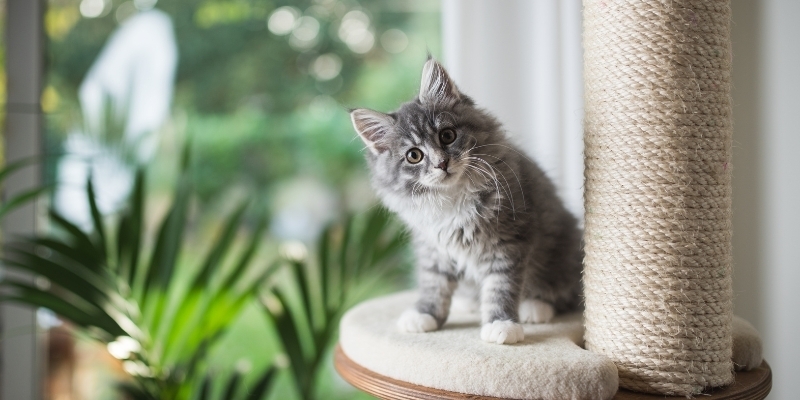We’re guessing that you probably don’t think much about your cat’s claws unless they’re scratching at your furniture!
But here are three important things to remember about your cats’ claws:
1. Scratching is natural
Scratching is a natural feline behaviour, and serves several functions:
- Sending visual and scent signals to other cats
- Keeping claws short and sharp
- Providing some enjoyable mental stimulation and physical exercise
- Sturdy, so it won’t move around as the cat is using it
- Tall enough for the cat to stand up and stretch out fully
- Located in an area of the house where your cat likes to be active
- Covered in a texture that the cat can sink their claws into, like carpet or cardboard
2. Some cats will require help to keep their claws in check
With feline nails growing one-to-two millimeters per week, indoor cats without access to abrasive scratching surfaces, and older cats who find it difficult to scratch vigorously, will require some human help to prevent painful claw overgrowth.
We advise trimming an indoor or less active cat’s claws every four-to-six weeks. Please consult our helpful team if you are unsure how to achieve this safely and painlessly – for both you and your cat!
3. Claw diseases can occur
As well as claw overgrowth or breakage, feline toes and nail beds can also be affected by other issues such as bacterial or fungal infections, autoimmune diseases, and tumours.
Please consult our veterinary team if you notice any changes in your cat’s claw thickness or texture, or if you notice any discharge, redness or swelling around their nail beds. Our vets are pretty sharp when it comes to claw health!

